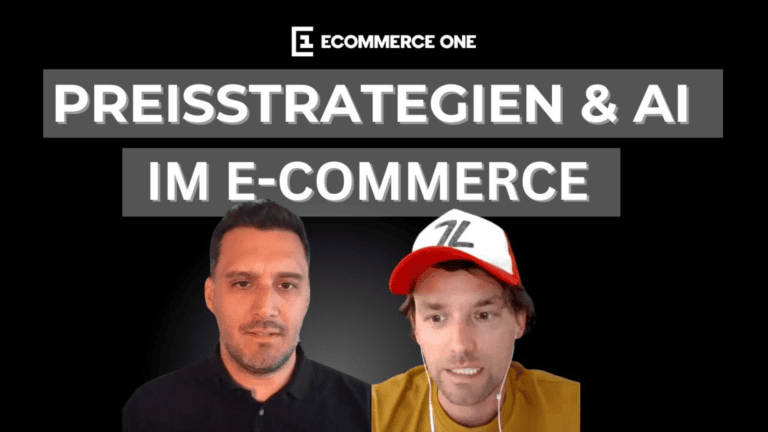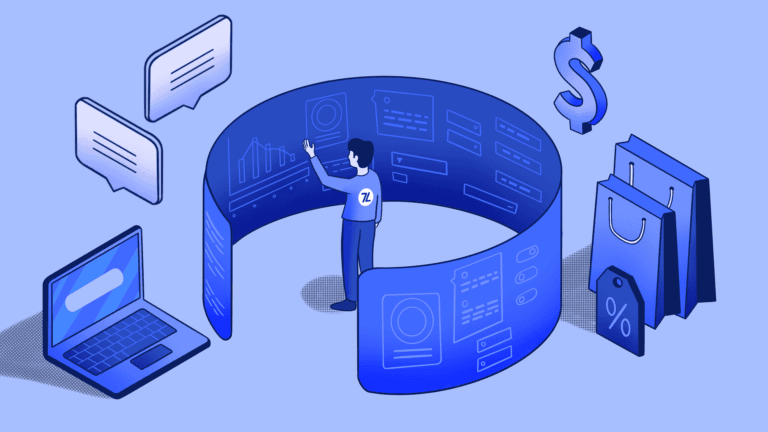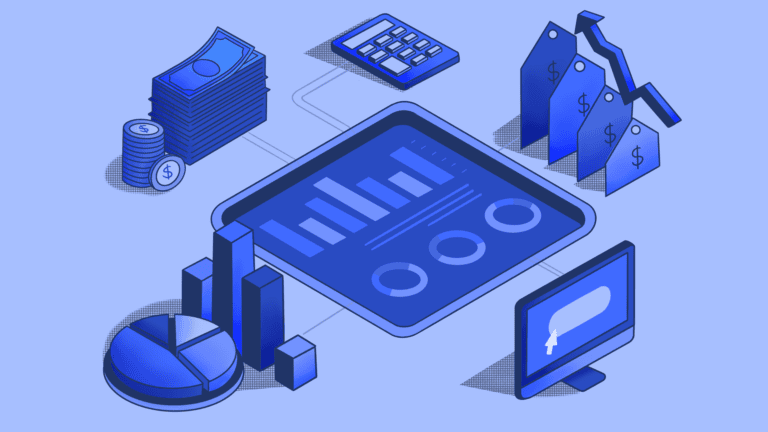Introduction: what is demand forecasting?
Online retail is at the core of the modern world, particularly in the last year, as we needed to move to shop online as a necessity rather than an option. In fact, online shopping now has people turning to the internet for even the most basic things, so much so they can now order a subscription for those products.
The more products, the more customer traffic. The more transactions that take place overall, and it becomes increasingly difficult to track and utilize all of the associated data generated. As the competitive landscape grows, the ability to parse through data, predict trends and set prices accordingly is becoming integral to remaining competitive.
Demand forecasting, a part of predictive analytics, aims to improve business management while also meeting critical KPIs by using this data to understand and predict customer demand. By relying on historical sales data, the latest statistical techniques, and algorithms, it is possible to use demand forecasting to estimate future sales.
As a result, companies can accurately define future service levels, adjust their prices accordingly to meet their targets in line with profit and revenue.
There are two primary types of traditional demand forecasting, and each uses different resources and data sets:
Quantitative Forecasting Methods
This method includes looking at existing data for a company, including financial reports, sales, revenue figures, and website analysis. Additionally, statistical modelling and trend analysis can utilize this data to predict future activity.
Within quantitative forecasting, methods used include:
- Trend projection: Using past sales data to project future sales. As the simplest and most straightforward demand forecasting method, this is most effective for businesses with a significant sales data history.
- Econometric: Combining sales data with information on outside forces that affect demand, from which a mathematical formula is created to predict changes. This method accounts for relationships between economic factors.
- Regression: A statistical technique for quantifying the relationship between variables. In simple regression analysis, one dependent variable (e.g. sales) is forecasted using one independent variable by predicting its regression coefficients.One dependent variable (e.g. sales) is forecast based on one independent variable. The values of the independent variable are typically those assumed to correlate and therefore can determine the values of the dependent variable. For forecasting purposes, knowing the quantified relationship between the variables allows data scientists to provide forecasting estimates.
- Exponential smoothing: A time series forecasting method for univariate data. This method assigns exponentially decreasing weights for newest to oldest observations. In other words, the older the data, the less priority (“weight”) the data is given; newer data is seen as more relevant and is assigned more weight. Smoothing parameters (smoothing constants)— usually denoted by α— determine the weights for observations. This is usually used to make short term forecasts as using this for the long term can be quite unreliable.
- Simple (single) exponential smoothing: Another time series forecasting method; however, this covers univariate data without a trend or seasonality. It requires a single parameter, called alpha (a), also called the smoothing factor or smoothing coefficient. This parameter controls the rate at which the influence of the observations at prior time steps decay exponentially. Alpha is often set to a value between 0 and 1. Large values mean that the model pays attention mainly to the most recent past observations, whereas smaller values mean more of the history is taken into account when making a prediction.
The basic formula for single exponential smoothing is:
St = αyt-1 + (1 – α) St-1
Where:
α = the smoothing constant, a value from 0 to 1.
When α is close to zero, smoothing happens more slowly. Following this, the best value for α is the one that results in the smallest mean squared error (MSE).
t = time period.
- Double exponential smoothing: an extension to exponential smoothing that explicitly adds support for trends in the univariate time series. In addition to the alpha parameter for controlling the smoothing factor for the level, an additional smoothing factor is added to control the decay of the influence of the change in trend called beta (b). The method supports trends that change in different ways: an additive and a multiplicative, depending on whether the trend is linear or exponential, respectively.
This method is deemed more reliable for analyzing data that shows a trend. Also, this is a more complicated method that adds a second equation to the procedure:
bt = γ(St – St-1) + (1 – γ)bt-1
Where γ is a constant that is chosen with reference to α.
Qualitative forecasting methods
The second set of methods involve looking at the larger economic climate. This takes into account emerging technologies and innovations that may affect a range of areas such as future sales, product lifecycle, pricing and availability changes, product upgrades, and more. To help predict demand, this information is viewed holistically.
Methods under this umbrella include:
- Delphi method: This method requires engaging outside experts and a skilled facilitator. To undertake this method, a questionnaire is sent to a group of demand forecasting experts. As a result, a summary of responses are collected and shared with the panel. This is repeated over a few successive rounds and results in companies being able to draw on expert knowledge and perspectives
- Salesforce composite: Using feedback from a sales group, businesses can forecast customer demand using their knowledge and expertise on what customers want and what competitors are doing
- Market research: A method based on the data collected from customer surveys. While this method requires more time and effort, it provides valuable insights that aren’t possible to get from internal sales data
It is worth noting that during the Coronavirus pandemic, there have been significant supply chain disruptions. This can be seen as a real-world example of the need and importance of demand forecasting.
Demand forecasting in the real world
No matter what the kind of business, demand forecasting can be an incredibly valuable tool. By making accurate predictions, you use the data produced to influence price setting, turnover, expenditure, risk assessment, and inventory planning.
We’ve seen during the pandemic that retail and eCommerce, in particular, are in need of accurate forecasting so that they can make faster and smarter decisions that are based on data-based predictions. In doing so, businesses can see the benefits to a variety of areas such as supply chains, marketing and financial functions, to name a few.
Further benefits of demand forecasting for businesses
But where else could your business see the benefits of demand forecasting, which include but are not limited to the following:
- Understanding external influences: By incorporating data about industry trends, the state of the economy and market projections, this model makes it easy for businesses to adapt and grow quickly. But don’t forget to consider some of the external factors which you can read about in our guide here.
- Recognizing seasonal trends: Using historical sales data to spot seasonal fluctuations. While some may be obvious such as national holidays this can also help businesses pinpoint quieter times and plan better pricing strategies ahead of time.
- Increased profitability and reduced costs: Due to the improved accuracy, businesses can improve the bottom line through revenue growth, cost reduction and productivity improvement – reducing missed sales opportunities through stock outs or markdowns on overstocked items.
- More resilient supply chains: The more knowledge you have, the better you can plan for customer demand. By forecasting future inventory requirements, the guesswork can be taken out of decisions.
- An improved customer experience: Better service means happier customers who are more likely to return rather than going to one of your competitors.
- Marketing effectiveness: By having a clear picture, you can adjust your marketing and ads to increase sales based on data, and don’t forget, sophisticated machine learning forecasting models can take marketing data into account as well.

In retail, we also see pricing disruption due to demand forecasting. Rather than using a traditional approach which includes applying price rules and seeing how they impact pricing and revenue, machine learning is changing the game.
By using highly accurate demand forecasting, which enables differentiated smart pricing, you can expect higher sales and profits, making Machine Learning an attractive option. You can learn more about dynamic pricing in our easy to understand guide.
It is because of the obvious benefits that we at 7Learnings consider demand forecasting an integral part of our approach for price optimization in retail. Our advanced pricing solutions use machine learning algorithms to determine optimal prices while also giving our customers accurate forecasts, which can be applied, as shown above.
Statistical modelling methods of demand forecasting vs machine learning methods
Although there is an overlap between machine learning and statistical modelling, both have their own place in similar use cases. Read on to find out more.
What is traditional statistical modelling?
Statistical modelling is a mathematical discipline that involves working to find the relationship between variables to predict an outcome — this method of modelling allows us to approximate the world around us mathematically.
When using statistical modelling, it is possible to explain relationships between other variables. It is because of this that Data Scientists use hypothesis testing, confidence intervals and other techniques to make interfaces and validate hypotheses from data sets.
The data used for statistical modelling doesn’t have to be large. In fact, it can be conducted on a relatively small set of data to try and understand the underlying nature of the data.
Statistical models work on various assumptions. For example, a linear regression model assumes that there is:
- A linear relationship between dependent and independent variables
- A mean error at zero for every dependent value
- That error is normally distributed for dependent variable value
- Homoscedasticity
- Independence of observations
- Other types of models, such as logistic regressions and non-linear models, also have their own set of assumptions or have to adhere to a continuous segregation boundary
Of course, statistical models can only be used to approximate reality – at 7Learnings, we monitor the impact of the models of business KPIs such as revenue and profit on an ongoing basis.
What is machine learning?
Machine learning is an AI-based computer science discipline that builds systems that can learn from data rather than being explicitly programmed. While this may be a relatively new field, it is rapidly growing, which allows data scientists to train models to learn from data over time.
Because of the increase in the sheer volume of data we produce, the need and potential for machine learning has grown. The fact that machine learning can manage and learn from trillions of observations makes data more manageable while also saving time.
What models should be used in demand forecasting?
When managing use cases with large amounts of attributes and observations, machine learning and its non-linear models is best. However, when working with a smaller data set with fewer attributes, traditional linear models work well.
While traditional modelling has its place, businesses looking to remain competitive and agile should consider machine learning due to the scale of transactions taking place and all of the data points generated. By using machine learning algorithms, you can walk away from explicit programming. In doing so, time is saved as data scientists are not tied up in manually working out the logic of how a variable affects sales.
As well as taking more time, traditional modelling can only take into account a limited number of data points – which means forecasting could be lacking crucial information without considering influential external factors.
Important external data points that should be considered include; competitor data, days of the week, holidays, regional trends, seasonal data and more. Obviously, all of these can have a huge impact on sales and revenue.
And let’s not forget that massive data sets that are generated from internal factors including the following:
- Assortment size
- Logistics costs
- Promotions and coupons
- Customer expectations
- Order economics
Due to the static nature of traditional modelling and the fact that all data is explicitly programmed, there is a limit, and it can be prone to human error.
On the other hand, machine learning algorithms continuously learn over time, meaning they can capture effects and relationships that a human wouldn’t be able to. The enormity of the data sets their complexity beyond human capacity, meaning the only viable solution is machine learning algorithms.
Want to learn more about machine learning and AI in retail? Click here to read our comprehensive guide.
The advantages of demand forecasting with machine learning for retail
According to Gartner, demand forecasting is a big part of the future. The attraction lies in the fact that using artificial intelligence-enabled demand forecasting in retail dramatically improves sales performance, inventory, associate scheduling and supply chain services. Demand forecasting represents one of the uses of AI retail which has a low barrier to implement and offers a high business value in return. It is a leading approach on the agenda of retail decision makers today.
It’s no surprise that demand change and forecasting is a uniquely complex topic. A variety of factors, all with their own degree of influence, are difficult to capture with “hard” rules or static decisions, such as statistical modelling.
On the other hand, machine learning models can simultaneously process a large quantity of information and various factors, including setting the degree of importance of each factor daily. According to McKinsey, when using machine learning, it is possible to reduce forecasting errors by up to 50%.
A combination of inputting driver data from internal and external sources and high performing algorithms means that machine learning can learn from such data and further accelerate data processing speeds and improve prediction accuracy.
Compared to these statistical modelling based forecasting methods, machine learning:
- Increases the speed of processing
- More accurate forecasting
- Uses recent data to automatically update forecasts
- Analyzes larger quantities of data
- Finds hidden patterns in data
- More adaptable to changes
- Produces stronger and more accurate regular forecasts
7Learnings’ approach to demand forecasting and machine learning pricing

An example of a seven day forecast
When considering demand forecasting for retail, there are many complexities to consider, and, as a result, significant knowledge is required. Understanding the particular requirements of the retail industry as well as the myriad of factors that influence consumer purchasing behaviour need to be considered. To remain competitive, stay on top of market conditions and stay informed, machine learning-based forecasting is the next step for businesses.
By using the most advanced machine learning-based methodologies to create highly accurate, effective demand forecasts, 7Learnings offers retailers a simple yet smart way to optimize prices.
At 7Learnings we are not only forecasting demand, but also important KPIs like return rates, outbound and inbound costs to get the most accurate prediction for future profits. This presents unique challenges, as the difficulty is to be both accurate on the total shop demand prediction and the product level.
We understand that no two businesses or their data are the same, which is why we take a tailored approach for each of our clients. After all, data needs careful management, from the initial data cleaning through to model training.
At each of these steps, the data scientists at 7Learnings make use of various statistical and machine learning methods to come up with a reliable and tailored solution for each individual client.
As a result, our demand forecasting informs price optimization, which can be configured based on individual pricing strategy and predetermined KPIs, enabling companies to reach their target revenue faster, expand their market position and strengthen their corporate brand.



